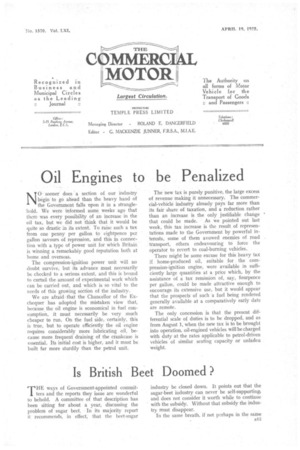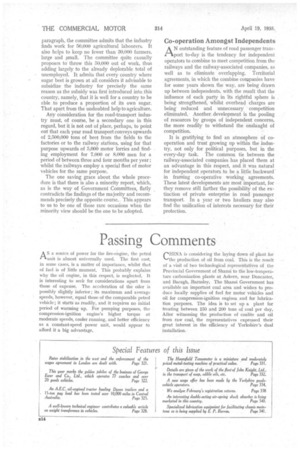Is British Beet Doomed ?
Page 23

Page 24

If you've noticed an error in this article please click here to report it so we can fix it.
THE ways of Government-appointed committees and the reports they issue are wonderful to behold. A committee of that description has been sitting for about a year, discussing the problem of sugar beet. In its majority report it recommends, in effect, that the beet-sugar industry be closed down. It points out that the sugar-beet industry can never be self-supporting., and does not consider it worth while to continue with the subsidy. Without that subsidy the industry must disappear.
In the same breath, if not perhaps in the same paragraph, the committee admits that the industry finds work for 50,000 agricultural labourers. It also helps to keep no fewer than 30,000 farmers, large and ,small. The committee quite casually proposes to throw this 50,000 out of work, thus adding largely to the already deplorable total of unemployed. It admits that every country where sugar beet is grown at all considers it advisable to subsidize the industry for precisely the same reason as the subsidy was first introduced into this country, namely, that it is well for a country to be able . to produce a proportion of its own sugar. That apart from the undoubted help to agriculture.
Any consideration for the road-transport industry must, of course, be a secondary one in this regard, but it is not out of place, perhaps, to point out that each year road transport conveys upwards of 2,500,000 tons of beet from the fields to the factories or to the railway stations, using for that purpose upwards of 5,000 motor lorries and finding employment for 7,000 or 8,000 men for a period of between three and four months per year ; whilst the railways employ a special fleet of motor vehicles for the same purpose.
The one saving grace about. the whole procedure is that there is also a minority report, which, as is the way of Government Committees, flatly contradicts the findings of the majority and recommends precisely the opposite course. This appears to us to be one of those rare occasions when the minority view should be the one to be adopted.
Co-operation Amongst Independents
A N outstanding feature of road passenger trans./..port to-day is the tendency for independent operators to combine to meet competition from the railways and the railway-associated companies, as well as to eliminate overlapping. Territorial agreements, in which the combine companies have for some years shown the way, are being drawn up between independents, with the result that the influence of each party in its rightful sphere is being strengthened, whilst overhead charges are being reduced and unnecessary competition eliminated.Another development is the pooling of resources by groups of independent concerns, the more readily to withstand the onslaught of competition.
It is gratifying to find an atmosphere of cooperation and trust growing up within the industry, not only for political purposes, but in the every-day task. The common tie between the railway-associated companies has placed them at an advantage in this respect, and it was natural for independent operators to be a little backward in framing co-operative working agreements. These latest developments are most important, for they remove still farther the possibility of the extinction of private enterprise in road passenger transport. In a year or two hauliers may also find the unification of interests necessary for their protection.




















































































